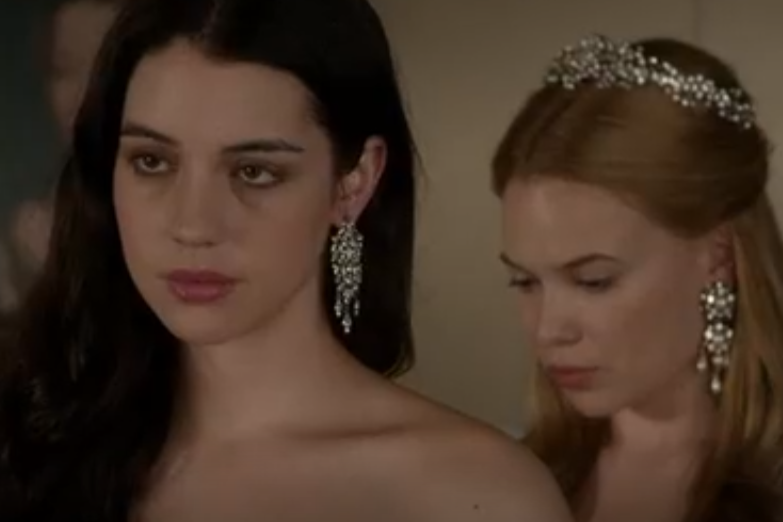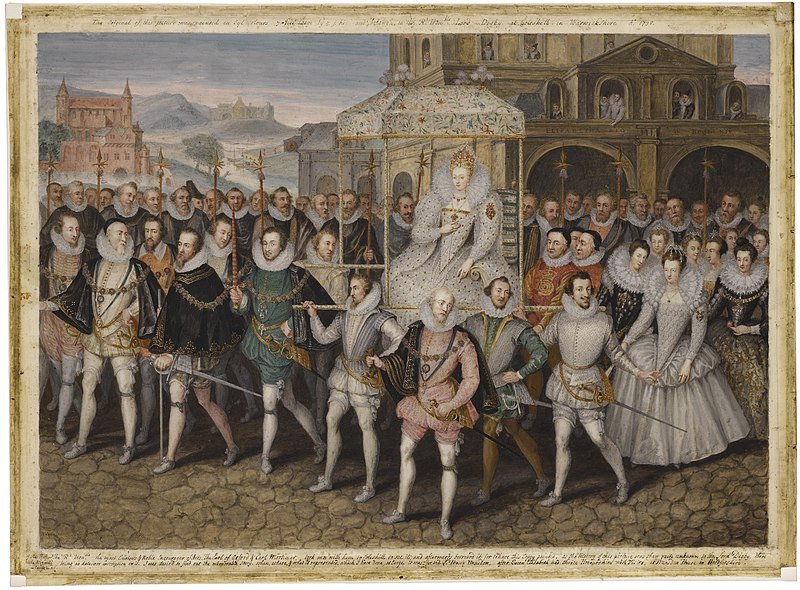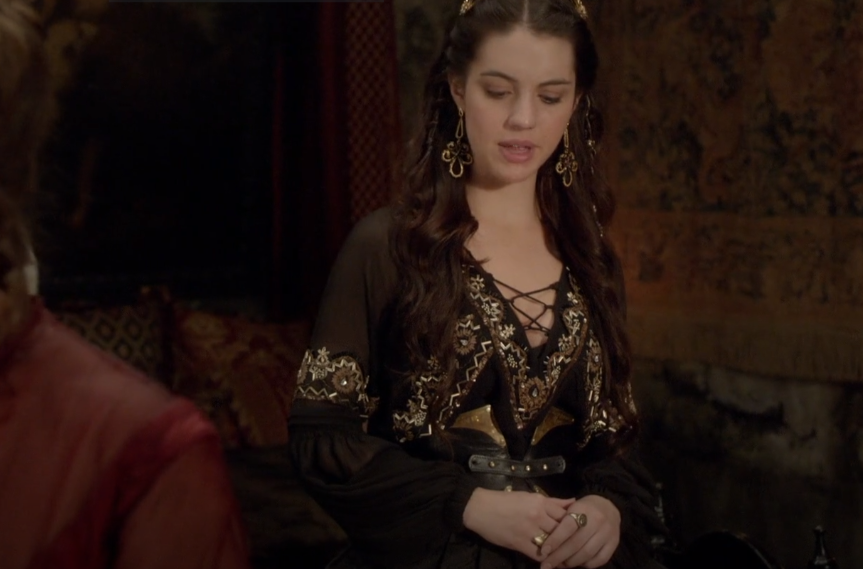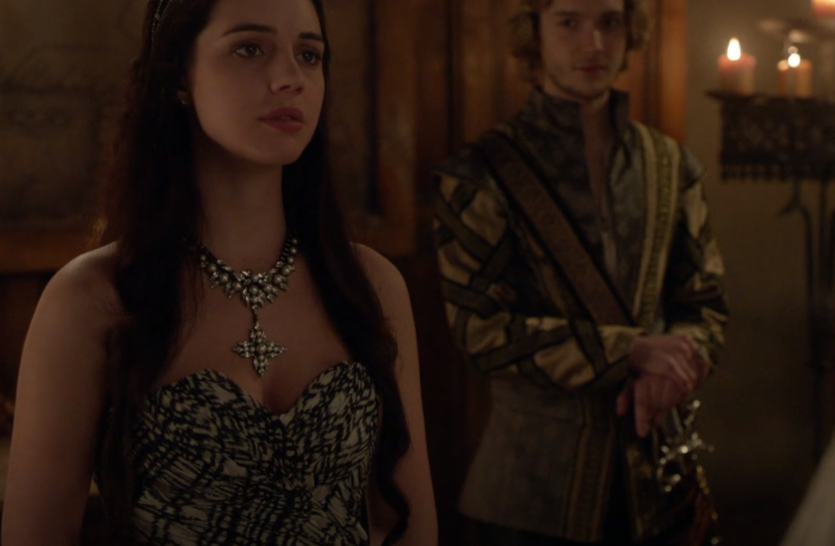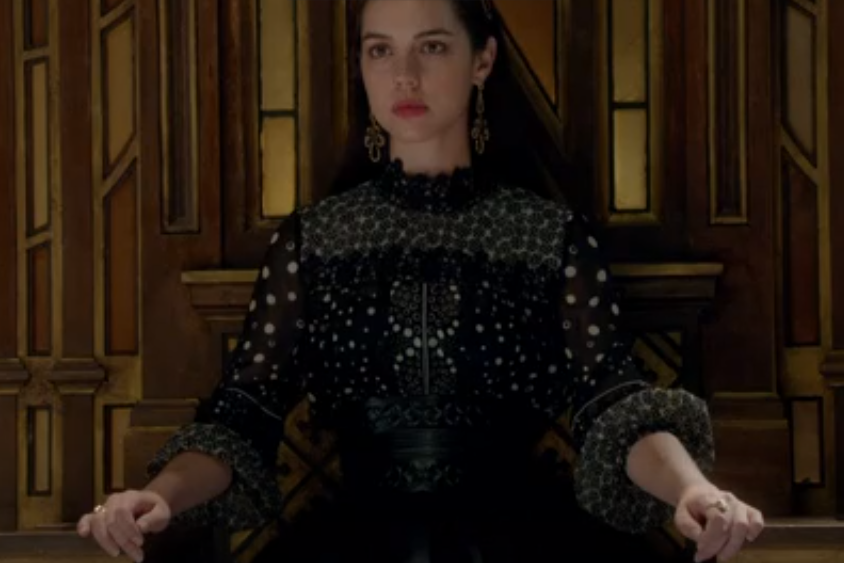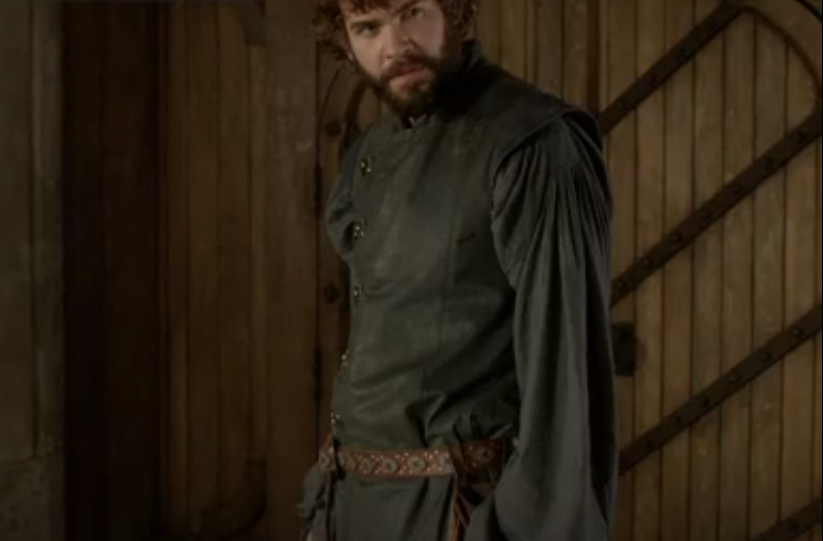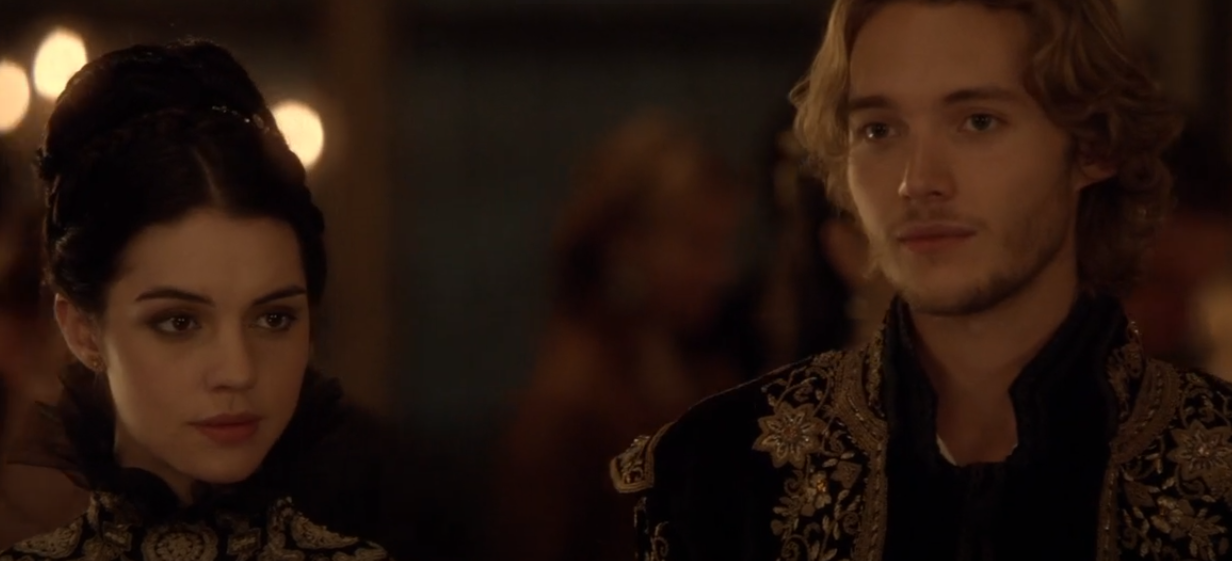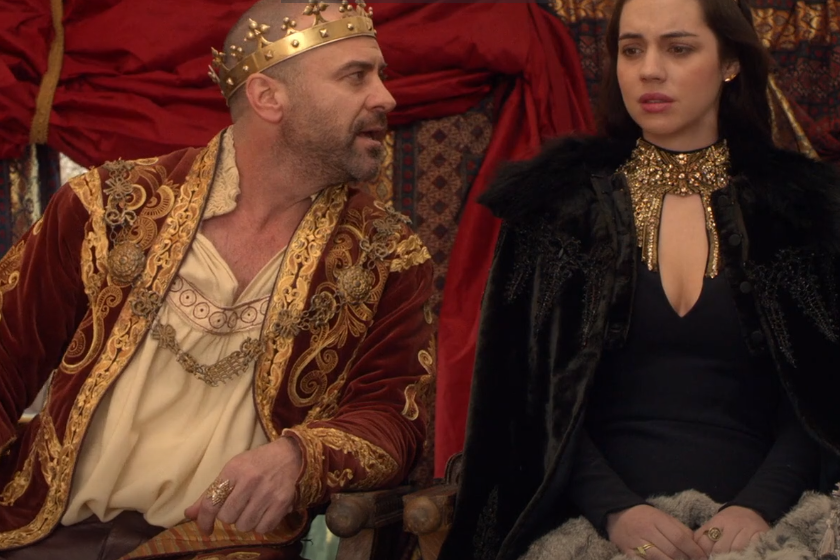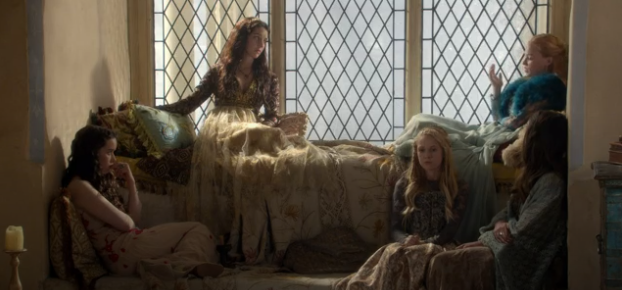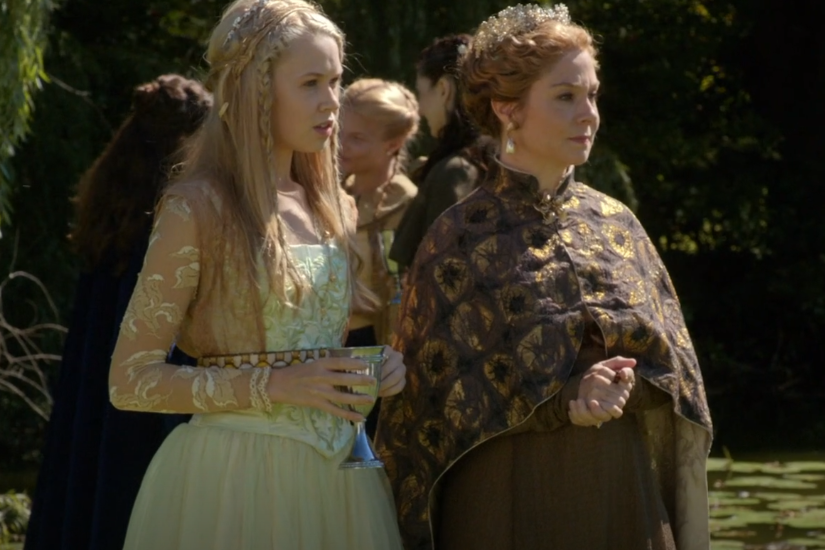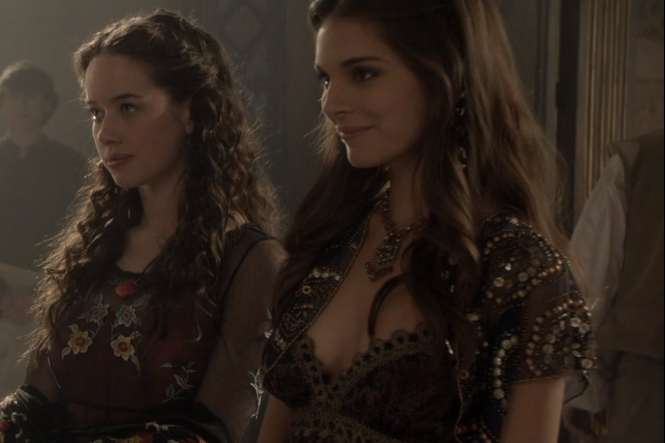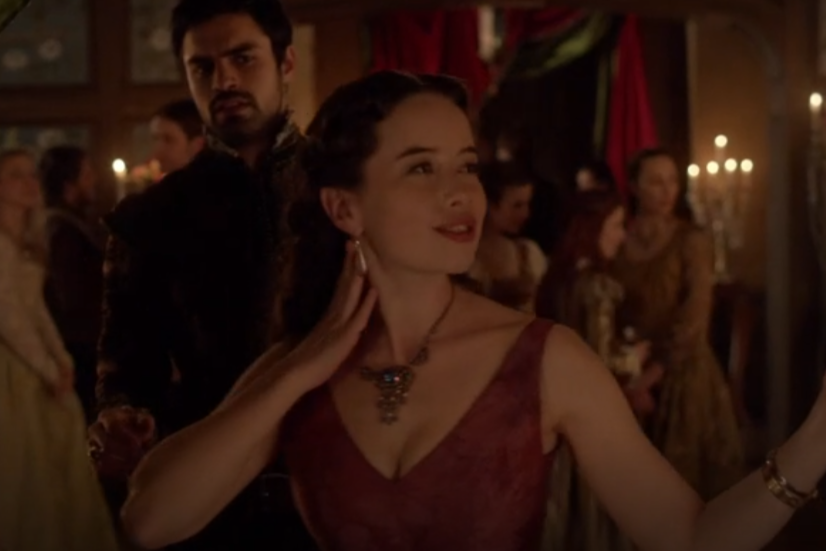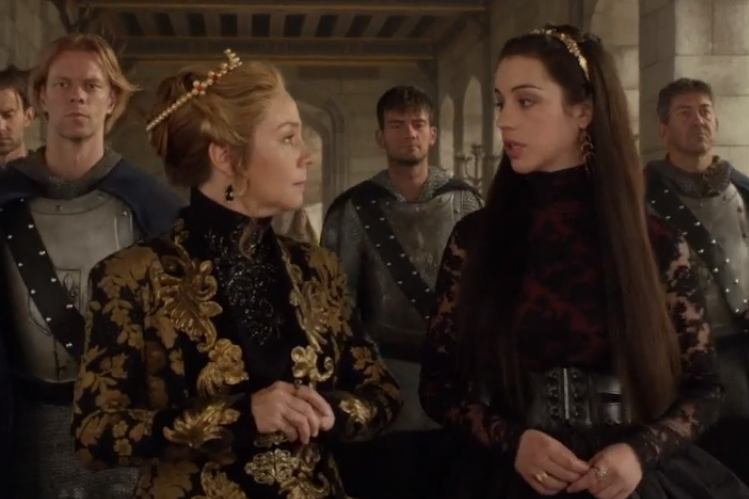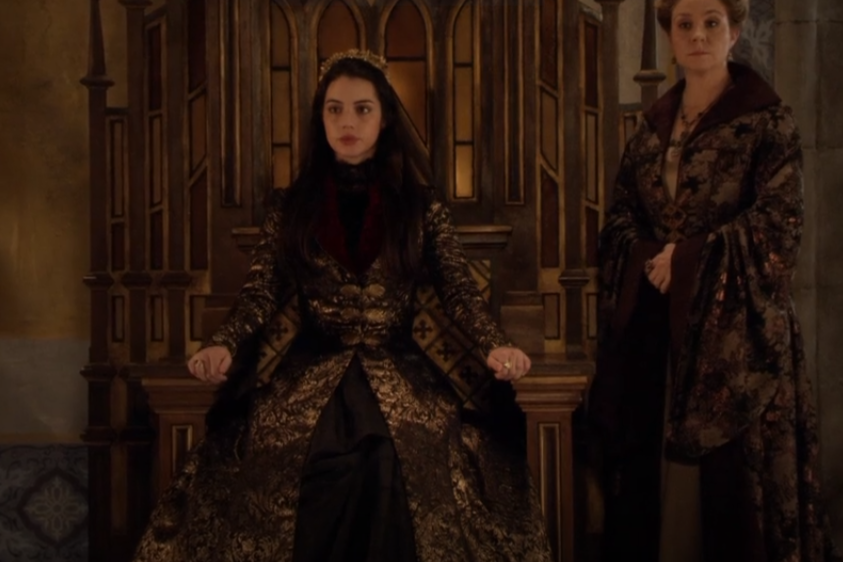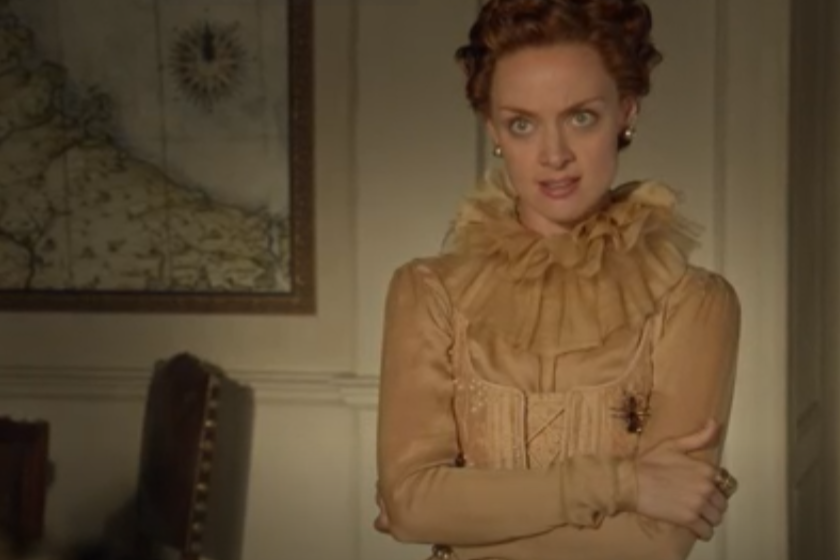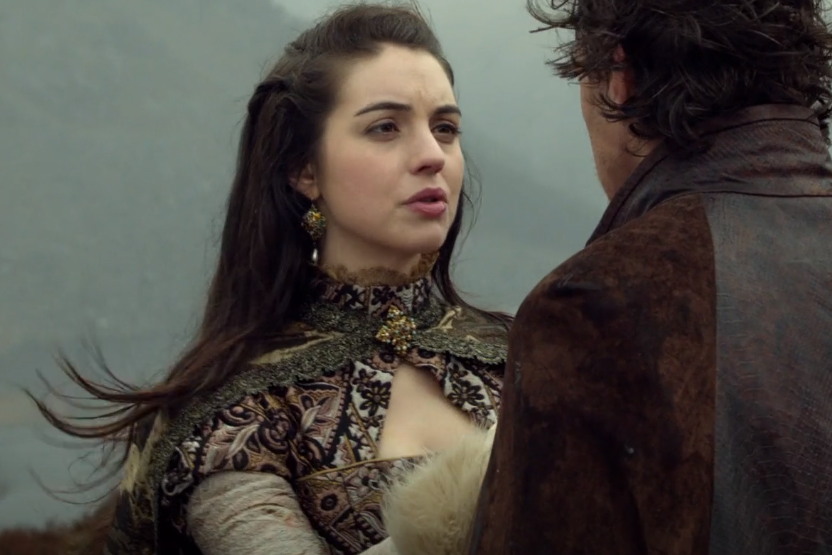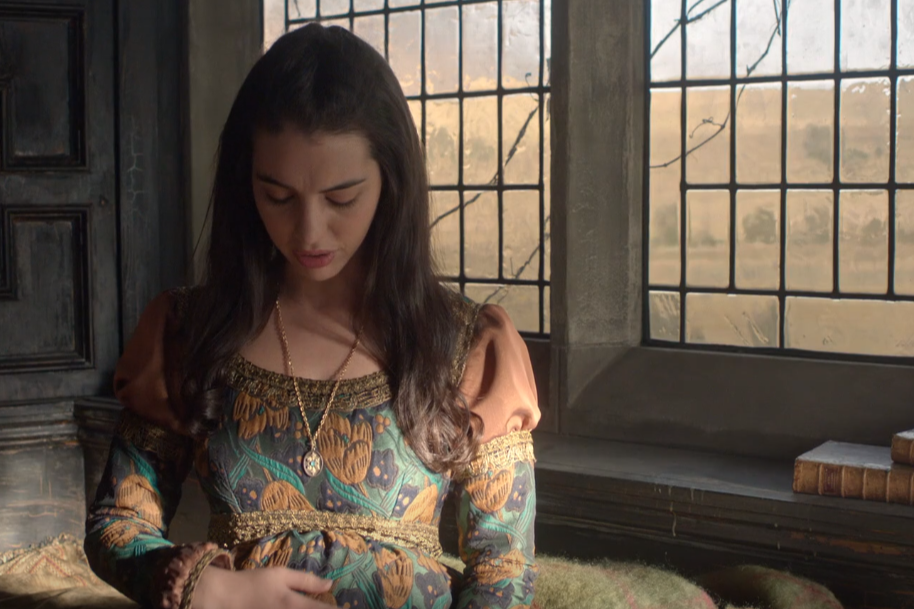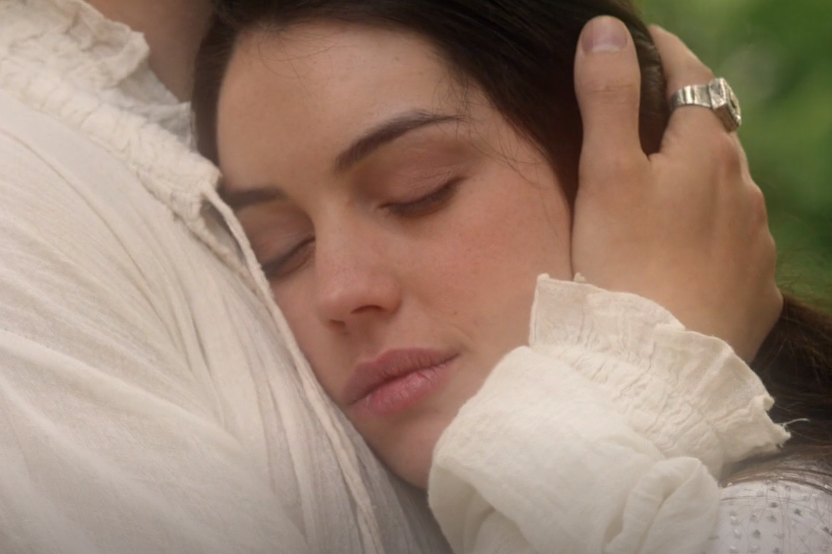The Queen Wore Free People
Costume Design on Reign
[This post contains discussion of sexual assault.]
In the world of teen soaps, a historical drama is a rare beast. Sure, there’s the occasional nostalgic dip into the twentieth century (The Carrie Diaries and its eighties New York come to mind). Sometimes a show will even dare to venture into the nineteenth: Dickinson and its young Emily and Sue. But anything further back is usually reserved for shows skewed toward adults (though, of course, still consumed by teens with a laptop and a working knowledge of pirating sites).
The exception, you must already know, is Reign: a loose portrait of a teenage Mary Queen of Scots, replete with pounding Lumineers songs and every flowy dress on Free People’s racks. For Reign knows, like The Carrie Diaries and Dickinson do, that modern choices can make a historical show more appealing and relatable to a younger audience. As costume designer Meredith Markworth-Pollack told Fashionista, the “contemporary feel” of the show and its costumes was always the intention. After all, she had previously worked on two of the CW’s contemporary shows: Gossip Girl and Hart of Dixie.
Greer dresses Mary for her wedding day in 1.13.
Now, I know the costumes of Reign aren’t for everyone; you can find plenty of forums and blogs frothing over the historical inaccuracy of the show’s clothes. Heck, I watched it when it originally aired, from 2013 to 2017, and I frequently giggled over the absurdness of some of the costume choices—still do. Take episode 1.13, when Mary finally weds Prince Francis: As she dresses for the ceremony, her mother presents her with a pair of rhinestone chandelier earrings, saying “Your father gave me these.” Ma’am, at which Icing by Claire’s?
Gams! (Public domain via Wikimedia Commons)
But at my heart, I am a Reign costume design apologist, and for a few reasons. One, the show never claims to be historically accurate—rather, it has a kind of cheeky knowingness, a playfulness in its mixing of centuries. Markworth-Pollack was well versed in mid- to late-sixteenth-century fashion, and she kept the elements that worked for the feel of the show (rich textiles and colors, big jewels, and “nipped waist[s] and extreme silhouette[s]” (Observer)) while discarding those that didn’t (specifically, “pumpkin shorts” (Observer)).
The landing page of Fashion of Reign circa 2017
Two, the mix of contemporary fashion, vintage pieces, original designs, and rented costumes makes for a fun scavenger hunt to their origins. Fashion of Reign, sadly now defunct but available through the Wayback Machine, ID’d many of the show’s costumes, often noting how the costume department dyed, bejeweled, and otherwise reworked garments to fit the show’s aesthetic. And Recycled Movie Costumes continues to find costumes reused across film and TV productions, including this dress that appeared on Gilmore Girls and Reign.
In this outfit from 1.10, Mary’s soft lace-up blouse is juxtaposed with her wide leather belt.
And three, the show’s costume design, like any good costume design, reflects the characters and their journeys. In the first episode, Mary returns to French court to marry her longtime betrothed, Prince Francis, son of King Henry II and Catherine de’ Medici. Though Mary is young, she is already a queen in her own right, and her costumes reflect her duality as a “warrior” and a “lover” (Fashionista)—“if there’s a harsh or strong detail,” said Markworth-Pollack, “it will be accompanied by something light and feminine” (E! News).
In episode 1.17, Mary wears this white-and-black plaid gown as she meets with her fellow Scotsmen. Note, too, the cross-like pendant that nods to her Catholicism.
In practice, this means lots of red and gold, brocade, beading, and crown-like headpieces—and, when Mary is particularly connected to her Scottish roots, a tartan. Markworth-Pollack often pulled designer pieces for Mary—“Givenchy, Alexander McQueen, Temperley London, Marchesa, Oscar de la Renta, Isabel Marant” (Observer)—which give her a unique richness among the other, less important characters.
Unsurprisingly a lot of black in an episode about the Black Death (2.1), including this dress with bubo-like polka dots
Another choice that sets Mary apart: her employment of the color black—a trend, Markworth-Pollack notes, that may have been “introduced” (Victoria Advocate) by the real-life Mary. The color gives her both a “defiant” (Victoria Advocate) and an ominous air—Nostradamus, a close confidant of Catherine, has predicted that a marriage to Mary will bring an untimely death for Francis.
If you could gaze into the future . . .
(Yes, this show also features a young, sexy Nostradamus, who sometimes goes into That’s So Raven–like visions—one of the show’s more supernatural choices.)
Even in the tense early days of their relationship, Francis and Mary match in black and gold (1.3).
Like Mary, Francis favors red, gold, and black, usually with embroidery or brocade. In fact, Mary’s and Francis’s costumes often complement each other, a demonstration of their everlasting bond. Francis also, like almost all of the male characters, wears a lot of leather pants—chosen as a much sexier alternative to those aforementioned pumpkin shorts (Observer).
Bash and Mary in 1.5
His half-brother, Bash (short for Sebastian, natch), pairs his leather pants with simpler pieces in earthy browns and olives—fewer fancy fabrics here. His wardrobe is befitting of a bastard who will never inherit the throne, who is known for his ability to navigate the dark woods around the castle, and who was raised amongst paganism.
And oh yes, Bash is also a complete invention of the show, one leg of the love triangle favored by every teen soap, no matter the century: “How Can I Possibly Choose Between Two Hot Brothers?” (Stay tuned for another notable example in a future issue.)
Me whenever King Henry is on-screen (1.22)
The father of both brothers is King Henry—relentlessly power-hungry and horny until his death at the end of season one. His costumes are accented with a gold crown, draped fur, and a livery collar. The inspiration, I can only guess, is King Henry VIII of England—or at least the yassified version seen in The Tudors.
The girls in 1.8
Accompanying Mary are four ladies-in-waiting—inspired by the “Four Marys” who served the actual queen. Five characters named Mary would’ve been a confusing mess—the 1557 equivalent of a classroom full of Emmas—and so the girls are bestowed monikers more fitting for Coachella-conceived babies: Aylee, Kenna, Lola, and Greer.
Each girl has her own color palette and style, but together, Markworth-Pollack intended them to look united, like a “painting” (E! News).
Aylee with Catherine in 1.5
The first brushstroke is Aylee, the “most conservative” (E! News) and boring of an otherwise modern quartet—I imagine so viewers wouldn’t feel so upset when she meets her end mid–season one. Markworth-Pollack kept Aylee in “creams, pinks, and nudes” (Fashionista)—often through reworked “vintage wedding dresses” (E! News). The overall effect is almost ghostly, a girl fated to be virginal forever.
Kenna with Lola in 1.16
Kenna is the group’s “flower child” (E! News)—initially more interested in pursuing sexual liberation than her friends, through a relationship with King Henry. Markworth-Pollack favored more “bohemian” pieces for Kenna: “beaded headpieces, wristlets, and a softer palette of laces, beading, and embroidery” (Fashionista), usually in “earth tones [and] creams” (E! News). Her earthy colors tie her to her eventual husband, Bash—though she departures the show at the end of season two, after their marriage withers.
Lola in 2.15
Lola is “romantic” in a palette of “plums and burgundies and pinks and lavenders” (E! News), rendered in lush fabrics like velvet and lace; even her hair is done in luscious Pre-Raphaelite curls. Markworth-Pollack pictured Lola as an “Ophelia in the water” (E! News)—the tragedy of which bears out for poor Lola. She is executed at the end of season three after being tricked into attempting to assassinate Queen Elizabeth I.
A teal fur shrug is so Greer (1.8).
The last lady standing is Greer—perhaps no surprise, as she’s the least titled and therefore most practical of the four. As Markworth-Pollack noted, Greer has come to her position through her family’s wealth, and so “she’s constantly trying to establish herself through her wardrobe and jewels” (Fashionista). Her style leans toward “golds” and “gem tones”—the colors of money—and “one too many accessories” (E! News). Greer does whatever she must for money—including entering a loveless marriage and running a successful brothel.
Naturally, all four of the ladies are below Queen Mary in station—and therefore, can never quite “out do” her in costume (Fashionista). Her two equals in the show, rather, are the two queens she must compare herself against: her mother-in-law, Catherine, and her cousin, Elizabeth.
Catherine in 1.5
Catherine is a Medici, only a queen by marriage, and she clings to the monarchy with even more ruthlessness than her husband. She protects her children fiercely, often against their will, and so Mary is a frequent foe, thanks to Nostradamus’s prophecy.
In episode 2.1, Catherine and Mary unite to keep Black Death from infiltrating the castle: note their similar high-necked silhouettes and black-and-gold color palette.
Still, Mary and Catherine share more than either will admit: the reds, golds, and blacks and luxurious fabrics of their costumes tie them together, and to Francis. Catherine may wear her brocades in more modest silhouettes—longer sleeves, higher collars, and more capes and jackets—but that’s a reflection of her maturity, the clothing a callous she has had to build over herself. In her early years as queen, Mary believes she can rule entirely by her youthful ideals, and Catherine is there to say, “Well, that’s cute.”
And yet, Catherine understands Mary’s struggles as queen better than anyone in court. In episode 2.9, Mary is raped by a would-be assassin, and Catherine is the first—and one of the only—to know. She helps Mary get ready to address her subjects, for she understands too well that a queen can never show her pain, lest it be perceived as weakness. In the throne room, Mary declares herself “untouched” and only her dress, a mirror to Catherine’s, says otherwise.
Elizabeth’s first appearance (2.22)
Elizabeth in 3.6
At the end of season two, Mary gains another mirror: this time, Elizabeth. Markworth-Pollack knew she could never put the “iconic” Elizabeth in “a Free People dress” (Observer), so much of her wardrobe is designed by the costume department. Like her queenly counterparts, Elizabeth favors plenty of gold and embellishment to show her status, but her silhouettes nod to her court’s styles: fan-shaped ruffs imitated through high collars and round ruffs through tiered ones.
Mary in 3.18, as she declares she’s returning to Scotland
Season four brings the added challenge of dressing for Mary’s pregnancy (4.15).
Elizabeth, of course, will ultimately be Mary’s downfall: The world cannot sustain two queens with a claim to the English throne. In season three, Francis finally meets his fate, and Mary leaves France for Scotland, where she is losing her grip on her subjects. The more romantic and “playful” tone of the earlier costumes is replaced by a “serious” one (Observer): the cuts of her dresses less adventurous, more mature, more Catherine-like; the fabrics still rich but the colors more somber—greens and browns that seem to mimic the Scottish landscape.
It’s fitting, then, that the last look of the show, and Mary’s life, is a simple one: The show jumps forward twenty years, over Mary’s imprisonment, to her execution day. She wears a black dress, no jewelry, no crown, no beading—stripped, as she has been by Elizabeth, from her claim to her throne.
But the execution is not the end to the story: After the ax falls, Mary awakes in bed with Francis, then frolics through a forest with him, wearing a dress much like—if not identical to—one she wore in season three, before he died. She has traded her mournful black dress for a bridal white one, death for something like heaven. For the show knows well that it cannot entirely escape history, but it can always choose how to frame it.
[I’ll be back with another post on Thursday, 12/21. Until then, be sure to check out the newsletter Yes, We’re Still Watching’s roundup of Gossip Girl moments, featuring me and a host of other writers and fans who just can’t stop thinking about that baffling show.]
